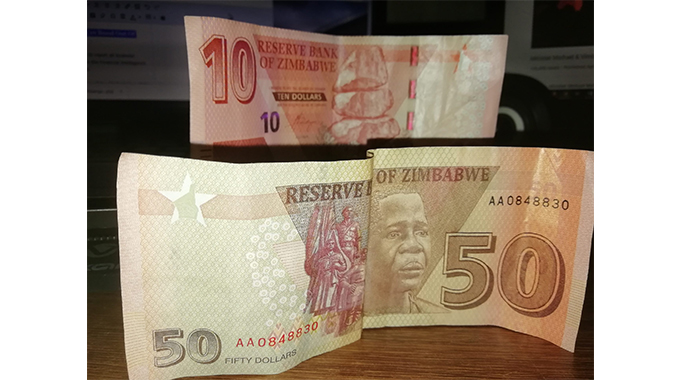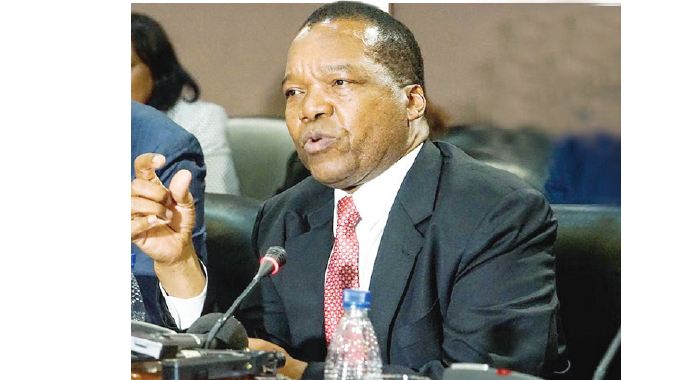COMMENT: Let’s not destroy our own currency

ZIMBABWE has come a long way in its battle to address currency exchange rate fluctuations, which is a norm for most economies across the globe.
Given the historic complications leading to hyperinflation in 2008, the adoption of the multiple-currency system in 2009, the return to the Zim-dollar in 2019, and now the use of the dual currency model, Zimbabwe finds itself in a complicated situation of continuous cycles of local currency depreciation.
No doubt, the stability of a currency is the lifeblood of any thriving economy, hence fiscal and monetary policy interventions always thrive to contain inflation forces while balancing this with steering demand for goods or services and ensuring steady supplies from the productive sector.
Of course, some have argued for a return to full-scale dollarisation as an effective strategy for taming inflation and guaranteeing stability.
But experience between 2009 and 2019 has shown the gross deficiencies and risks of such a policy stance, such as the associated liquidity constraints, crippling domestic product competitiveness when trading, and higher import bill, which reduces the country into a supermarket of foreign goods, among others.
In a dollarised setting the Government essentially has no monetary policy leverage, which is a big handicap as both monetary and fiscal arms must complement each other. It is in this regard that the restoration of the local currency in 2019 was a most welcome development, and is still a big achievement under the Second Republic.
While conditions for its return were not 100 percent ideal as it were, many would agree that using the local currency brings greater good to our economy. We are convinced the comprehensive economic measures undertaken since 2018 under the
Transitional Stabilisation Programme (TSP) have gone to length to create a favourable fiscal space to support stable economic fundamentals.

Reserve Bank of Zimbabwe (RBZ)
Yes, the economy has encountered these volatile exchange rate fluctuations before, but the magnitude of what is happening now needs to be swiftly checked, lest it completely destroys our local currency. The more than double disparity between the formal exchange rate and the parallel market is not acceptable. We, thus, commend the urgent corrective measures being taken by the Government to restore macroeconomic stability, which every stakeholder must embrace. We believe the fine-tuning of the foreign currency auction system is the way to go in easing pressure on the street dealers in line with industry recommendations.
Also, the 100 percent forex retention on all domestic sales should ease demand for forex while the temporary lifting of import restrictions on basic goods should boost critical supplies. Reserve Bank of Zimbabwe Governor, Dr John Mangudya, has indicated that these and other measures should yield a positive impact within the next few days.
We concur with the industry leaders that over and above these temporary measures, Government should continue to fine-tune its policies in a manner that creates strong demand for the local dollar, and at most, legislate that most public taxes, wages, and service fees be paid in local currency.

Dr John Mangudya
As opposed to having almost 80 percent of transactions being in forex, we urge authorities to steer the ship towards gradual weaning off the USD regime, and promoting the local dollar with the ultimate goal of restoring a mono-currency framework.
With experts arguing that the devaluation of the exchange rate in Zimbabwe is always linked to higher liquidity injection, there is a need to mop up the liquidity before it continues to cause further depreciation while due diligence must be exercised to contain the broad money supply factor.
This time around, economists attribute increased money supply to continue payment to contractors in ZWL dollars, which is converted on the parallel market as contractors try to preserve value by purchasing USD, financing forthcoming elections, the inclusion of tobacco on the 15 percent mandatory liquidation, and recent salary increments for civil servants.
Despite other challenges, most of our regional peers and across the globe have by all means defended their own currencies, and Zimbabwe should not be an exception. Unless we fight hard as a nation to preserve the strength of our currency, the economy will remain susceptible to exchange rate fluctuations under the dual currency model, with adverse implications on production, prices, and aggregate demand.

National Development Strategy 1 (NDS1)
Looking into Vision 2030, and the ambitious growth targets under the National Development Strategy (NDS1), resolving the currency stalemate is critical in determining overall economic performance. The continued exchange volatilities are essentially a threat to the demand side of the economy, as these negatively affect the pricing of domestic goods and services, and erode the substitution options.
On the supply side, continued exchange rate instability is a serious drawback to the viability of the productive sectors that require a stable currency to retain skilled labour, harness operating capital, and energy costs, and acquisition of raw materials or key inputs. Currency depreciation comes with a lot of distress for businesses and recent financial reports from listed companies testify of the strain on sales volumes, income, and new investment spending as revenues are constrained.
When a domestic currency depreciates, as in our case, the costs for these variables become even more expensive, and this cripples the viability of entities, which in the long term cripples major supplies and could lead to massive loss of jobs.
What is most desirable is a balance between supply and demand or what they refer to as the market equilibrium, which is most possible when the domestic currency is stable, which is an outcome of how Government manages its spending while boosting production and export earnings. With a local currency, we are able to achieve export competitiveness, which limits competition from foreign suppliers.












Comments